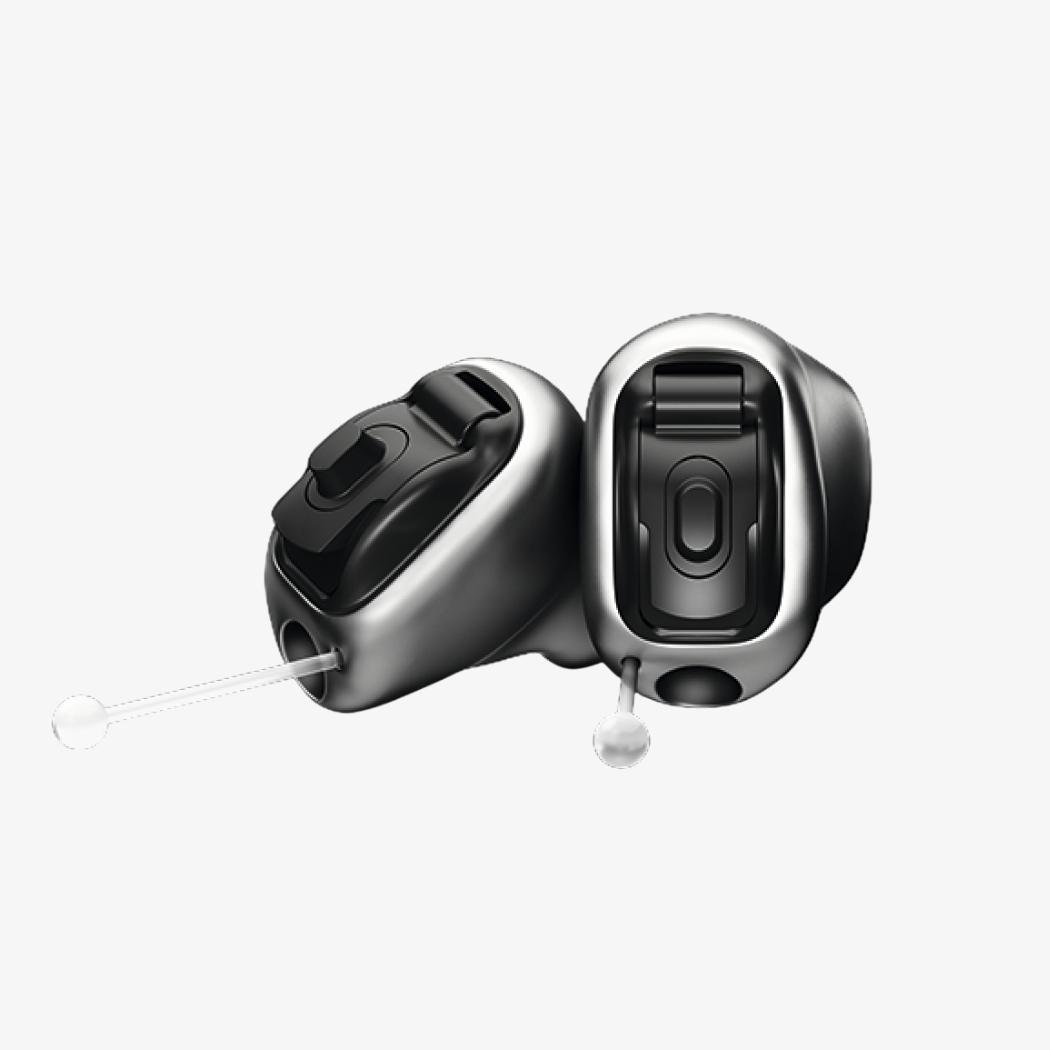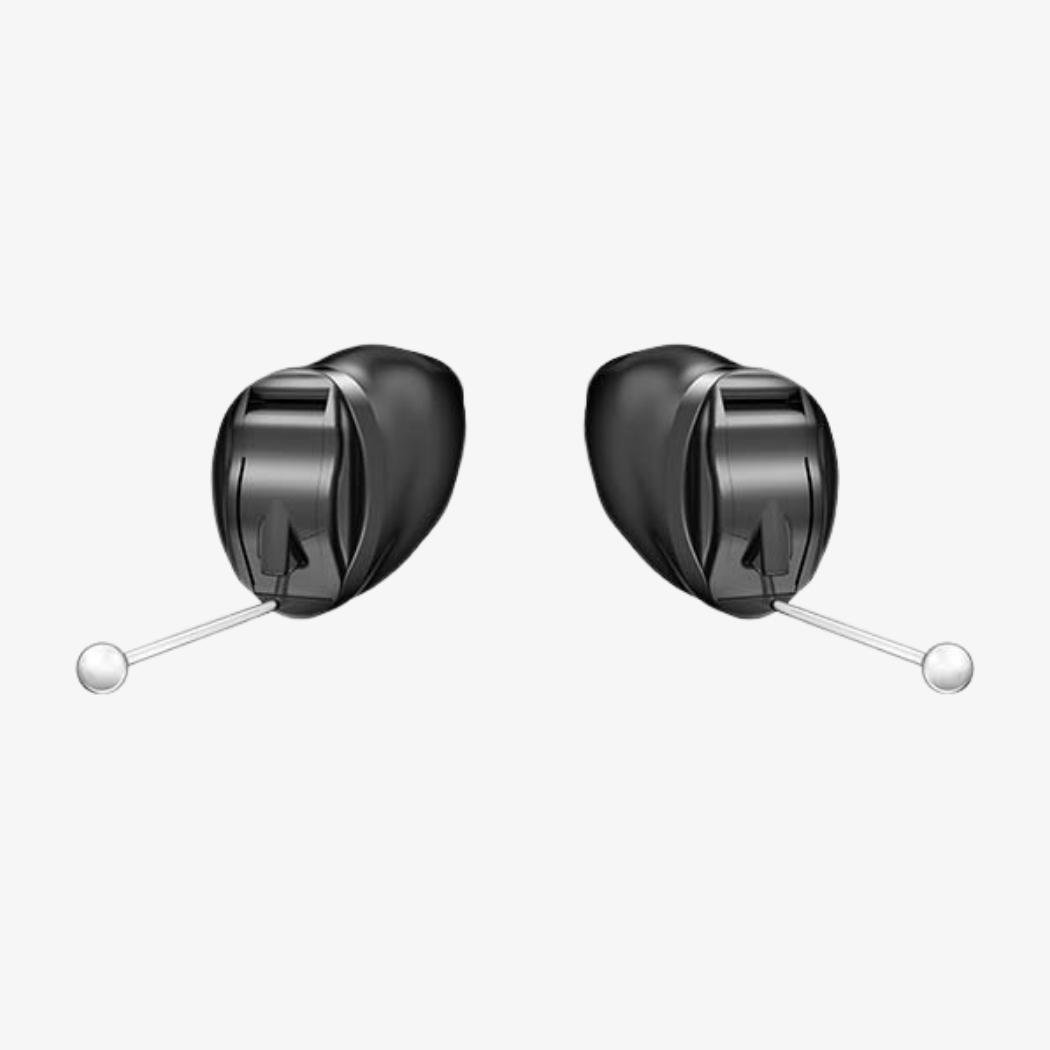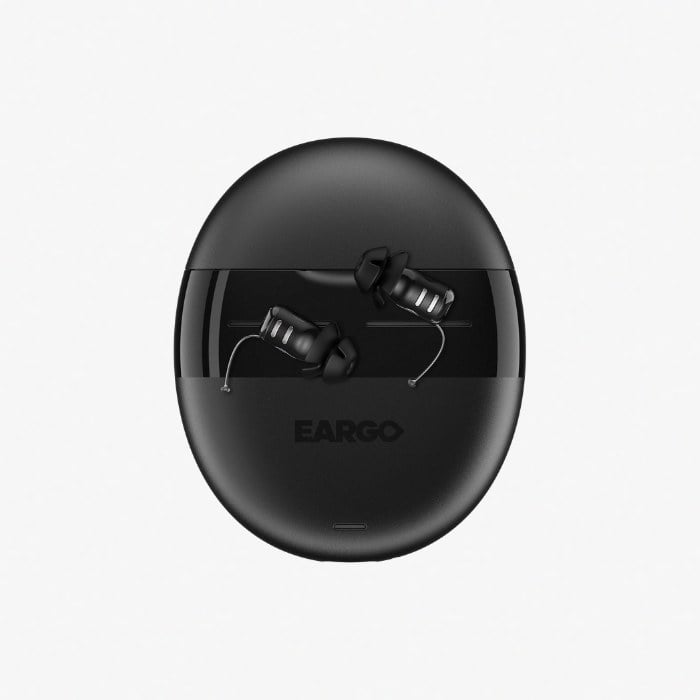Full Review
In early 2021 Oticon released an AI-powered operating system inside their flagship behind-the-ear style hearing aids. The update came with a brand new computer chip and a sound algorithm trained to act like the human brain.
To train their hearing aids, Oticon set up high-end microphones in everyday situations like restaurants, meetings, TV-watching environments, and outdoors. They used these microphones to capture over 12M individual sounds and then fed that data to an AI-powered computer.
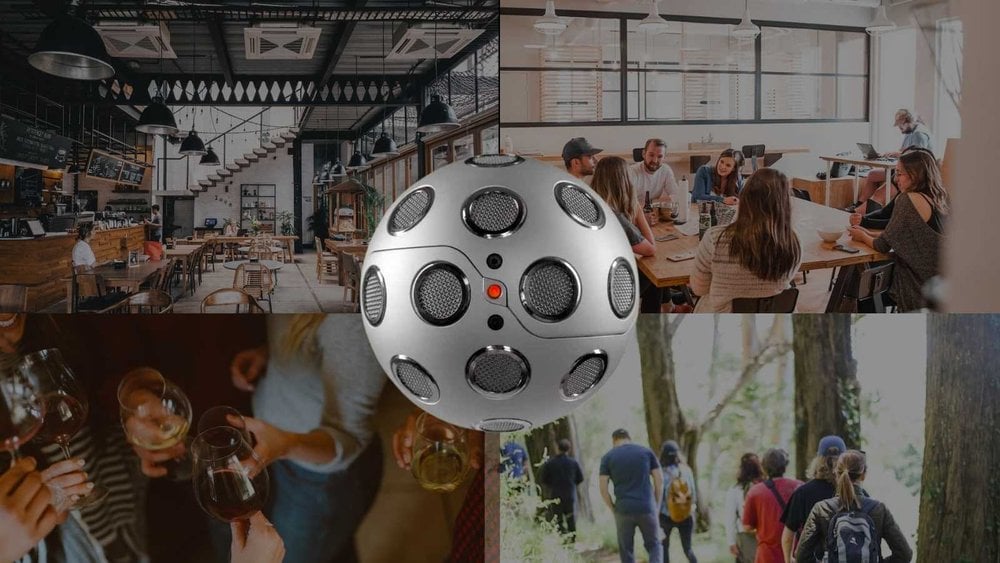
The AI computer then analyzed the sounds using deep learning to determine which sounds should be amplified and which should be sorted out as background noise.
All of this tech wizardry went into the Oticon More (and later Oticon Real) hearing aid, which quickly became one of the top-rated products in the world.
There was just one problem. Oticon never rolled out the new tech to their custom-molded devices. Until now.
Finally, in August 2022, Oticon released the latest operating system across a new line of custom styles called Oticon Own.
In this review, I’ll break down the new Oticon Own product, the tech you should know about, and how to access Oticon Own through a local care provider.
Let’s get into it!
About Oticon

Oticon is among the largest and most respected hearing aid makers globally, but its story has a unique and relatable beginning.
In 1903 Hans Demant watched from afar as Crown Princess Alexandra wore an early hearing aid during her coronation as queen of England.
The event got Demant's attention because his wife Camilla had suffered from hearing loss since childhood. Demant traveled to England to buy the same hearing device and brought it home to his wife in Denmark.
Inspired by the results, he began importing hearing devices for more people in Denmark and kicked off a century-long hearing healthcare legacy that remains today.

Today, Demant is the world's second-largest manufacturer of hearing aids, with several popular brands, including their flagship brand, Oticon.
Oticon is still headquartered in Denmark, where the brand designs its latest hearing technology.
Oticon Own Technology
Oticon Own hearing aids come in 5 sizes. None of the hearing aids in the Own family are rechargeable, but the three largest sizes are Bluetooth enabled and allow streaming from iPhone and Android.
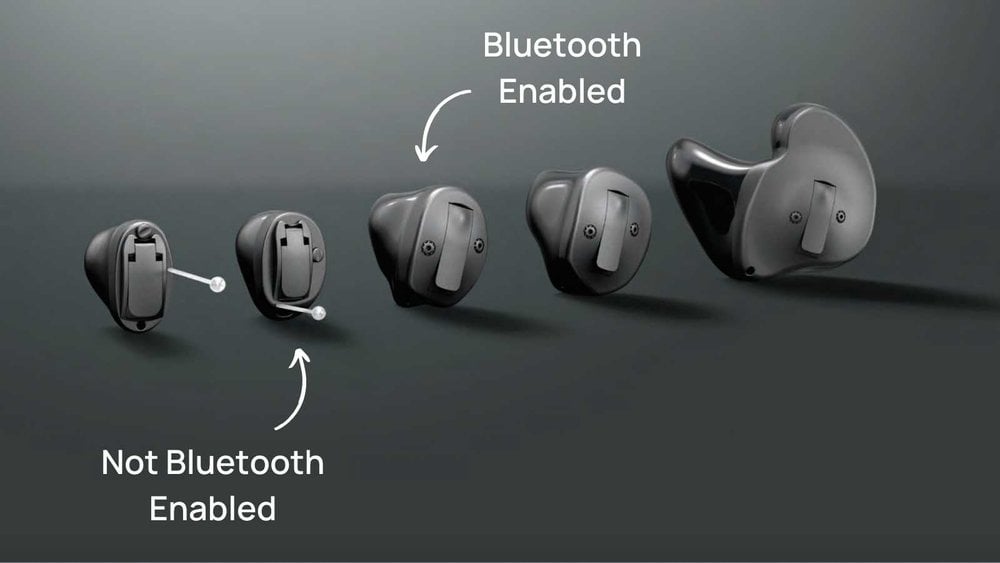
Oticon Own custom hearing aids come in 5 sizes, from invisible to full-shell. The overall sound processing is mostly the same throughout the line, but some technology like Bluetooth and app controls are only available in larger sizes. Here’s a breakdown of technology by size:
Oticon Own Invisible Hearing Aid (IIC)
- Tiny size makes it truly invisible,
- Uses a disposable size 10 battery
- Water and dust resistant
- Best for mild to moderately-severe hearing loss
- Does not allow Bluetooth streaming
- Does not allow Telecoil
- Does not allow telehealth programming
- Does not offer push-button volume controls or app connection
- Does not offer a binaural connection between hearing aids meaning that the hearing aids operate independently
Oticon Own Completely In Canal Hearing Aid (CIC)
- Slightly larger than the entirely invisible style
- Uses a disposable size 10 battery
- Water and dust resistant
- Best for mild to moderately-severe hearing loss
- Does not allow Bluetooth streaming
- Does not allow Telecoil
- Does not allow telehealth programming
- Includes an optional push button or volume wheel
- Includes binaural connection between hearing aids to improve directionality
Oticon Own In The Canal Hearing Aid (ITC)
- Slightly larger than IIC and CIC sizes
- Uses a disposable size 312 battery
- Water and dust resistant
- Best for mild to severe hearing loss
- Allows Bluetooth streaming or Telecoil
- Allows telehealth programming after an initial appointment
- Includes an optional push button or volume wheel
- Includes binaural connection between hearing aids to improve directionality
Oticon Own Half-Shell and Full-Shell
- More visible and easier to handle for those with dexterity challenges
- Use a disposable size 312 battery
- Water and dust resistant
- Best for mild to severe hearing loss
- Allows Bluetooth streaming or Telecoil
- Allows telehealth programming after an initial appointment
- Includes an optional push button or volume wheel
- Includes binaural connection between hearing aids to improve directionality
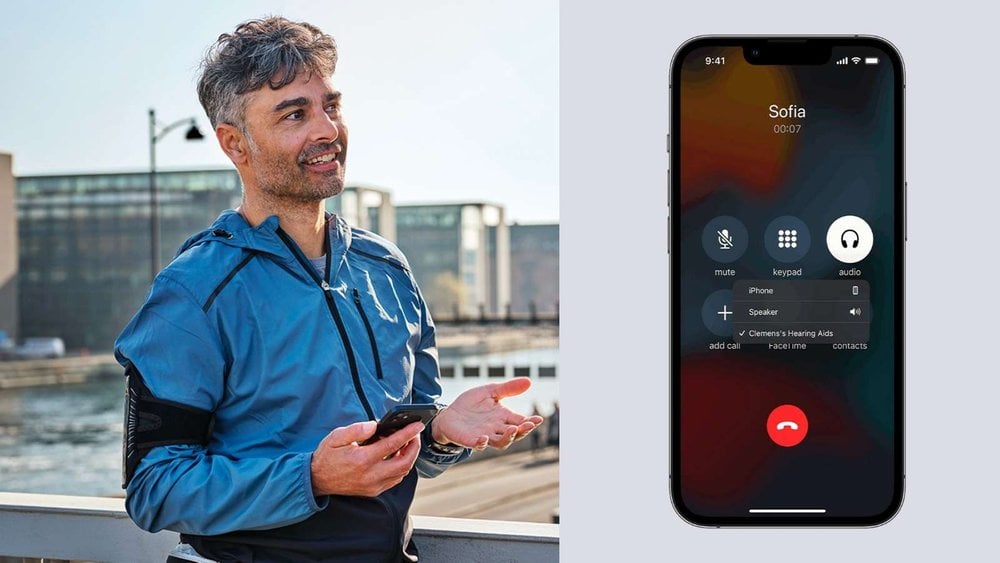
Oticon Own hearing aids allow hands-free calling on iPhone and iPad. You can leave your phone in your pocket, and the microphone in the hearing aids will pick up the sound of your voice.
If you use an Android device, you will hear the voice of the person on the end of the line in your hearing aids, but you will need to hold your phone nearby to pick up the sound of your own voice.
Does the AI in Oticon Own make a difference?
Oticon Own hearing aids now use the latest Oticon operating system and chip. Studies conducted by the brand show that the AI-powered updates lead to 30% less listening effort. That’s a big jump.
The AI features also allow Oticon to give their hearing aids a more “open” sound quality that lets a whole landscape of sounds in. Wearers of the popular Oticon More (which now shares an operating system with Own) report that the sound quality feels more natural and less “closed off” than other top brands.
Key features in the Oticon app.
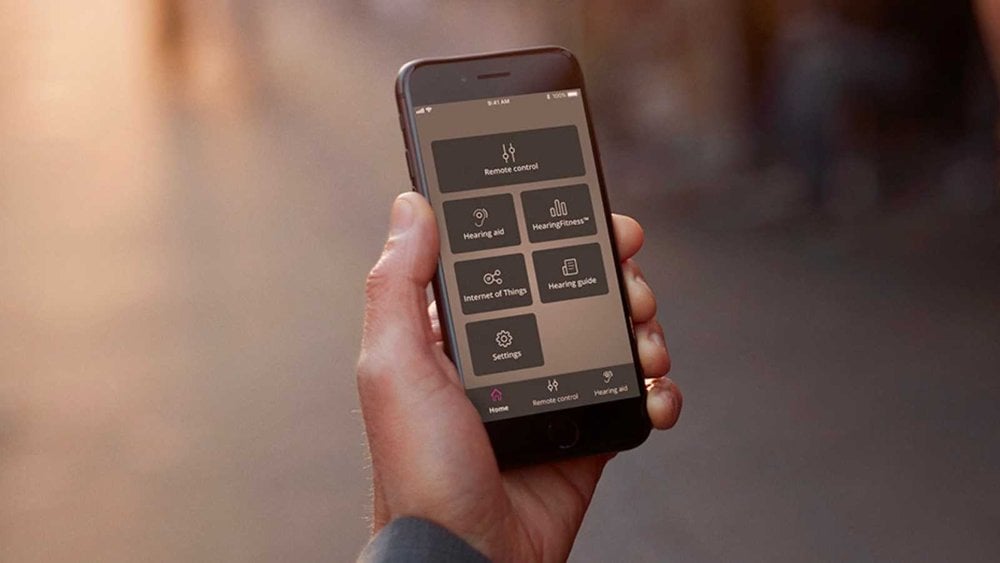
The Oticon smartphone app is one of the simplest to use among major brands. The app gives you access to volume, programs, and a very convenient “Find My Hearing Aid” feature, which helps locate the precise location of a lost device.
Oticon Own Fitting Process
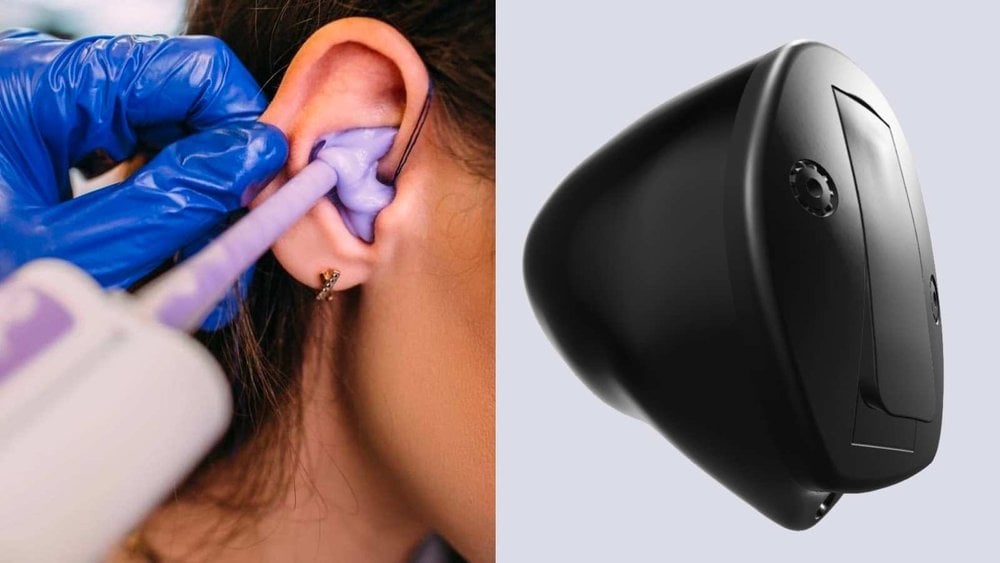
Appointment #1 - Hearing Test and Ear Impressions
If you are interested in getting Oticon Own hearing aids, you’ll want to start by finding a local audiologist. ZipHearing is an excellent place to start because all of their audiologists agree to pre-negotiated pricing, which usually saves customers 25%-40%.
Once you find a local clinic, you will go in-person to get a hearing test and custom earmold impressions.
Impressions are taken by filling the canal of your ear with a silicon paste that is removed a few minutes later. That imprint is then shipped to Oticon to create devices that match the exact shape of your ear.
Appointment #2 - Programming and Adjustments
A few weeks later, your custom Oticon Own hearing aids will be shipped to your local audiologist, where you will go for a fitting appointment.
The local audiologist will show you how to place the hearing aids in your ear and program the devices to match your specific hearing loss. Your hearing professional can also help you connect to Bluetooth if you have a Bluetooth-enabled device.
Follow-Up Appointments - Fine Tuning The Sound
Nearly all hearing professionals offer free follow-up appointments for 1-3 years. Oticon Own hearing aids allow for remote programming adjustments, so if you need tune-ups you can choose to do them from the comfort of home.
Pricing & Care
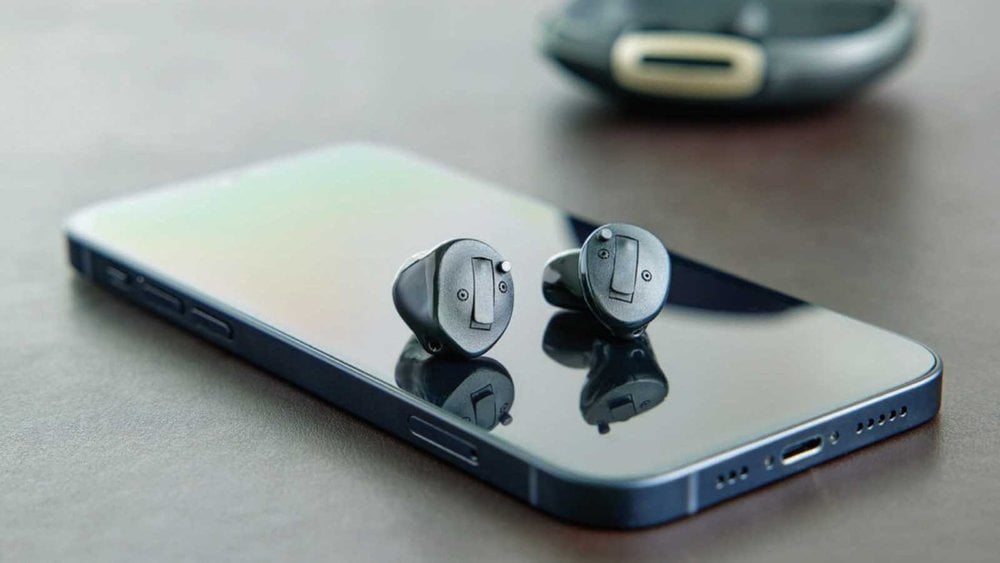
Oticon hearing aids are only sold by an in-person hearing professional. That hearing professional will test your hearing, take earmold impressions and program your devices.
Your local professional can also provide technical support in connecting your hearing aids to a phone and downloading necessary apps.
You can find a local professional in a few ways.
Option 1: Use a care database like this one to search local clinics. This option gives you the most flexibility but often leads to the highest price.
Option 2: Work with a care network like ZipHearing, which offers pre-negotiated pricing in most zip codes. Prices through ZipHearing are typically 25%-40% lower because of the volume of customers they serve.
Oticon Own Prices
The average "walk-in" price of Oticon Own hearing aids is $5,000-$7,500 per pair. That should include two-three years of service.
ZipHearing offers Oticon Own hearing aids for the following prices:
Oticon Own 1 $4,598 (highest tech)
Oticon Own 2 $3,798 (mid-tech)
Oticon Own 3 $3,198 (budget option)
Final Thoughts
Oticon Own is an excellent option if you don't mind changing batteries and want the latest sound processing technology. People love the "open" sound quality, and the smallest sizes are truly invisible in most ears.
My advice is to spend some time considering which features are most important to you before you visit your local professional. If you want entirely invisible hearing aids, you will need to give up Bluetooth connection and a push button. If you are comfortable with an in-the-canal size, you'll get Bluetooth and an optional push button or volume wheel.
If you want to see some other popular invisible hearing aids check out this guide.
Soundly conducts in-depth research to guide prospective hearing aid wearers. Our work is funded through reader support. When you buy through our links, we may earn a commission.



